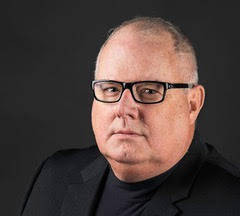Courage can’t be taught, but warrior ethos needed
There are no institutions that can teach courage.
Military boot camps and police academies train their recruits physically and mentally, but they cannot teach or test courage.
Soldiers and Marines climb out of their foxholes and low-crawl over 50 yards while automatic gunfire whizzes 4 feet above, but they know as long as they keep crawling, none of the live rounds will strike them.
The application process for law enforcement agencies is intense. The written and physical fitness tests weed out those who are lacking in strength and mental acuity, but they cannot measure courage.
The vigorous background investigation will sort out those lacking integrity and an ability to work well with others, but it won’t identify those lacking courage.
The high-stress police academy will eliminate a few recruits for various reasons, none of which involves facing real gunfire. Toward the end of academy training, scripted scenarios will give recruits the confidence for real-world encounters with criminals, but it cannot predict the future officers’ behavior in a gun battle.
For the tech-savvy, there are no courage apps.
Courage is a personal decision to act despite being terrified.
By now, most people know former Broward County, Florida, deputy sheriff Scot Peterson and Metropolitan Police Department officer Cordell Hendrex.
Peterson, a 32-year law enforcement veteran, was the Parkland High School resource officer who waited outside a classroom building while a gunman fatally shot 17 people and wounded 17 others.
Hendrex, a nine-year Metro police veteran and training officer, was finishing up a report at Mandalay Bay on Oct. 1. His partner was a second-day trainee. When the gunfire started, Hendrex and his partner proceeded toward the elevators and rode one to the 31st floor. The gunfire was coming from the 32nd floor.
His decision to get off on the 31st floor was, in my opinion, a sound tactical move to ostensibly approach the gunfire from a nearby stairwell. Had the gunman been in or near the hallway on the 32nd floor, the elevator bell would have sounded, making the elevator car an instant deathtrap.
Hendrex, his trainee partner and the three security officers who joined them had the momentum, initiative and element of surprise. In the evolving confusion, for unknown reasons, Hendrex could go no further and every tactical advantage melted away.
Meanwhile, hundreds of police officers, both on- and off-duty, and nonofficers were performing heroically under automatic gunfire. They would all endure a cataclysmic test of courage. Officer Charleston Hartfield, who was also a Nevada Army National Guard first sergeant and combat veteran, was killed while rescuing others. Another 57 victims would suffer fatal wounds and more than 500 would be wounded before the gunman killed himself. Hundreds of other victims have suffered what can only be described as battlefield trauma.
The majority of law enforcement officers spend their entire careers, some for more than 30 years, without engaging a suspect in a gunfight. Most scholarly research places that number at 95 percent. They are the fortunate ones.
The 5 percent of law enforcement officers who have wounded or killed assailants during a gunfight are rarely unscathed afterward. Despite a justified ruling after microscopic scrutiny by their agencies and the media, many will forever second-guess themselves.
Peer acceptance and approval are high on the needs list of all law enforcement officers. Many peers become armchair gunfighters and harshly critique the real gunfighters.
Peterson was at the end of his career and retired soon after with a hefty pension. Hendrex may not be as fortunate. I was angry, but now I pray they survive their crises and accept what they cannot change.
I don’t have a solution to testing courage. It is a violent world because we live in a free society where the criminal class and their enablers take full advantage of our jurisprudence.
In 2014, a Ferguson, Missouri, police officer justifiably shot and killed an 18-year-old strong-arm robbery suspect who had battered the officer and tried to take his firearm. A false “hands up — don’t shoot” narrative evolved that the media perpetuated and weaponized. The FBI and the Department of Justice exonerated the 28-year-old officer, but not before he was electronically lynched by opportunistic reporters and politicians.
Nevertheless, many agencies have since caved to similar political and media pressure and have discouraged proactive policing. Hence, the “Ferguson Effect.”
Politically correct sound-bites and sensitivity training have replaced or diluted combatant training. In some agencies, warrior ethos training has been eliminated.
We cannot teach or test courage; however, we can unhandcuff the street officers and allow them a better chance to perform courageously if we instill warrior ethos and more combatant training in the police academy.
Dan Jennings is a 38-year law enforcement veteran. He received the medal of valor and Purple Heart for his actions as a deputy sheriff during an armed robbery in 1996. He can be reached at bcpd267@cox.net.








